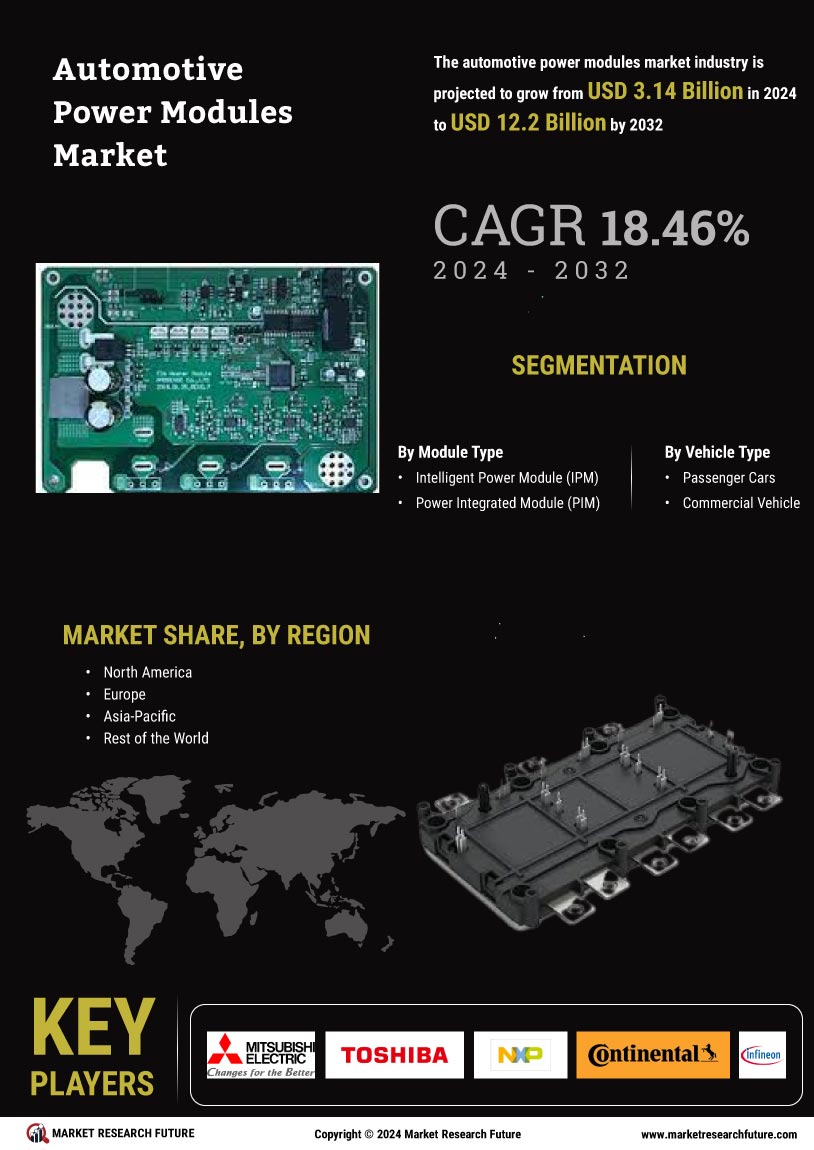Automotive Power Modules Market Summary
As per Market Research Future Analysis, the Global Automotive Power Modules Market was valued at USD 3.14 Billion in 2024 and is projected to grow from USD 3.14 Billion in 2024 to USD 20.24 Billion by 2035, with a CAGR of 18.46% during the forecast period (2024–2032). The market is driven by the increasing demand for energy-efficient battery-powered devices, connected automobiles, and environmentally friendly vehicles. The rise in electric vehicle adoption significantly contributes to market growth, with passenger cars leading the segment due to their higher revenue generation compared to commercial vehicles. The Asia Pacific region dominates the market, holding 45.80% of the global share in 2022, followed by Europe and North America.
Key Market Trends & Highlights
Key trends driving the automotive power modules market include the following:
- The market is expected to reach USD 20.24 Billion by 2035, growing at a CAGR of 18.46%.
- Passenger cars accounted for the largest market share in 2022, driven by demand for safety and fuel-efficient technologies.
- Asia Pacific held 45.80% of the global market share in 2022, fueled by increased vehicle production and urbanization.
- The adoption of electric vehicles is rapidly increasing, with over 2 million sales recorded in 2018.
Market Size & Forecast
| 2024 Market Size | USD 3.14 Billion |
| 2035 Market Size | USD 20.24 Billion |
| CAGR | 18.46% |
Major Players
Key players include Mitsubishi Electric Corporation, Toshiba Corporation, NXP Semiconductors, Continental AG, and Infineon Technologies.

















